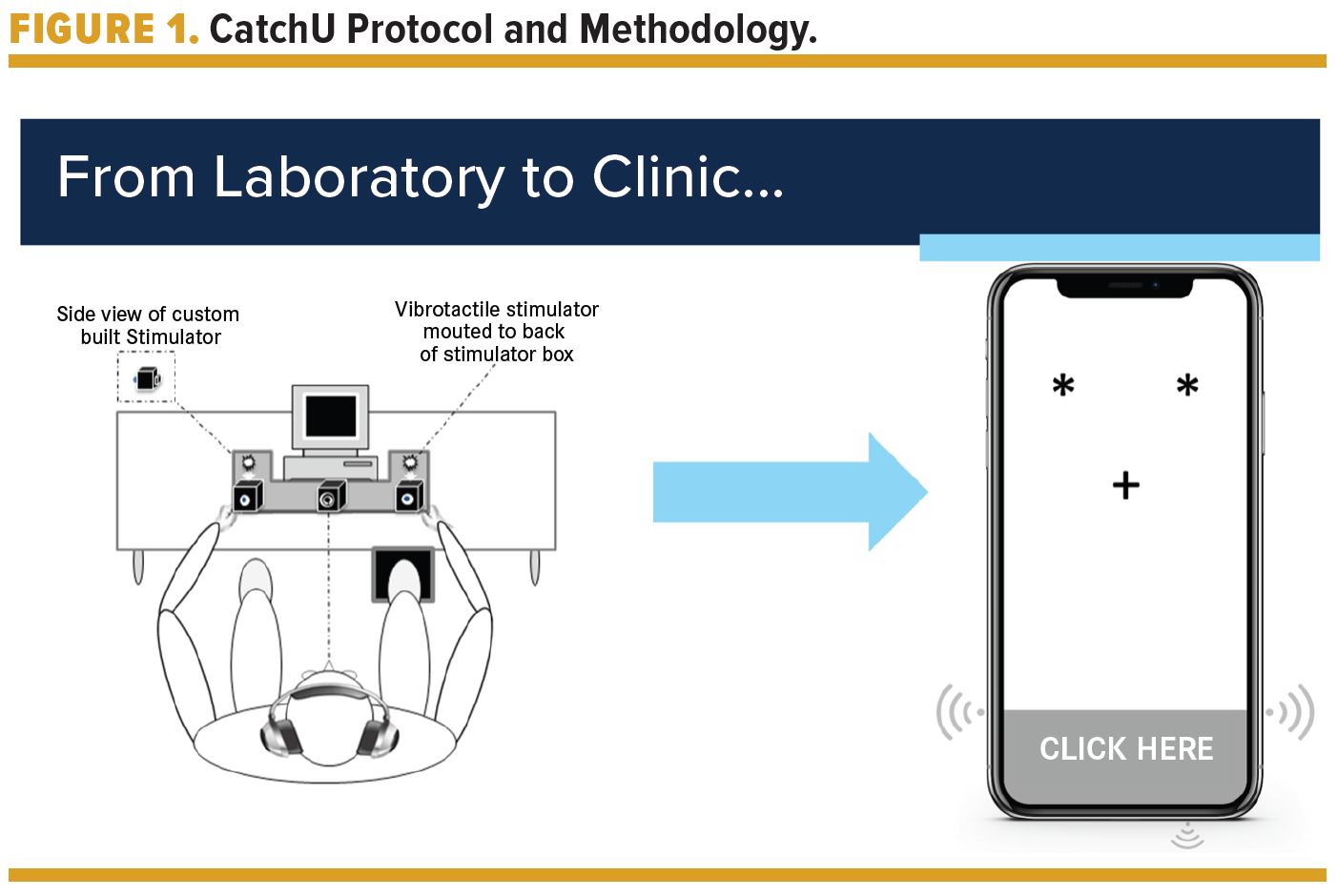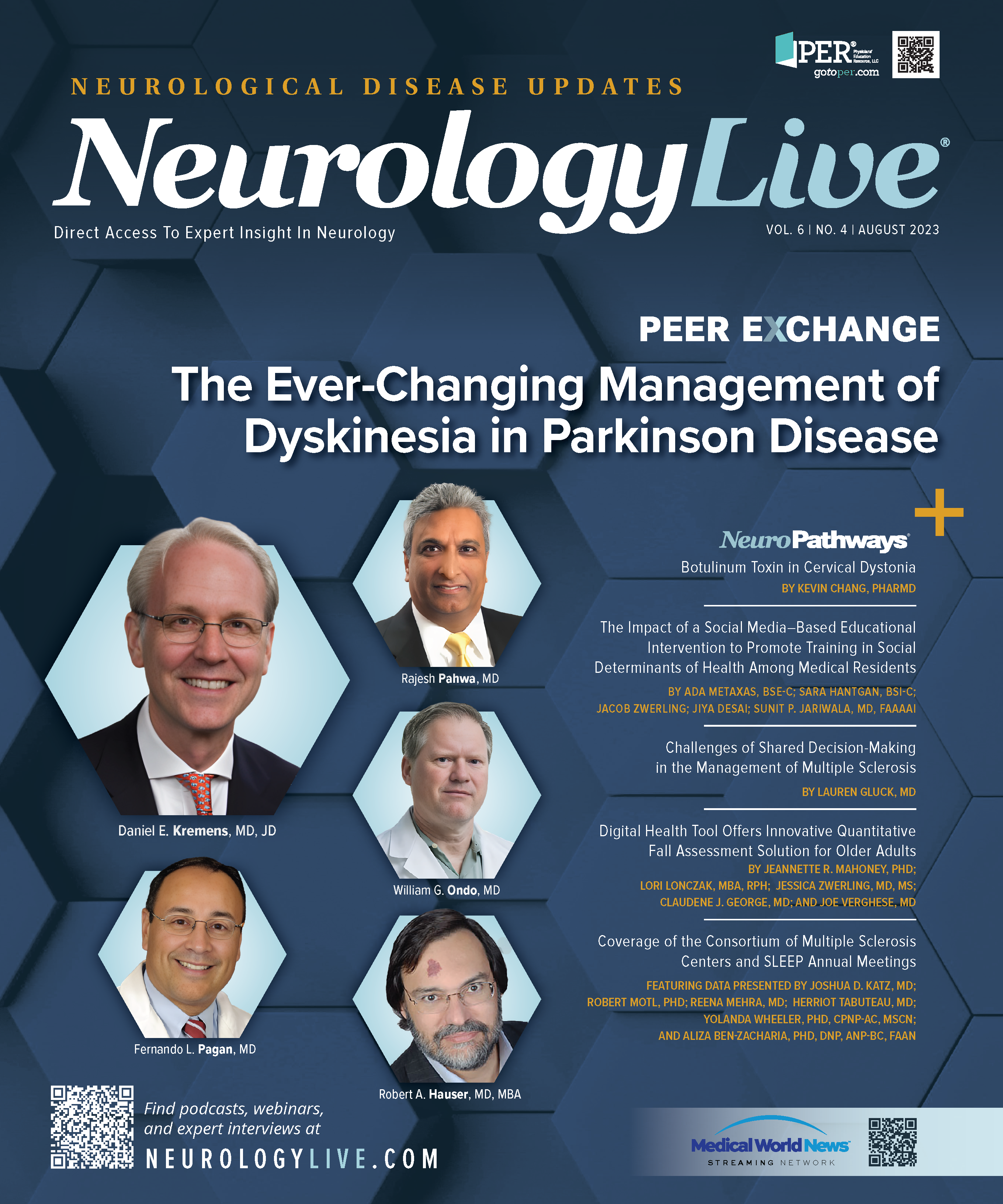Publication
Article
NeurologyLive
Digital Health Tool Offers Innovative Quantitative Fall Assessment Solution for Older Adults
Author(s):
Falls cost the US more than $50 billion annually, but platforms like CatchU, a transformative digital health tool, provide quantitative fall assessment that might significantly enhance the current standard of care for predicting falls.
Prefer to listen to your news? Click play to hear this article read aloud by AI. [LISTEN TIME: 8 mins]
Jeannette R. Mahoney, PhD

Lori Lonczak, MBA, RPh

UNISENSORY DEFICITS ARE notoriously associated with aging. In particular, visual and somatosensory impairments have been individually linked to slower gait, functional decline, increased risk of falls, and worsened quality of life. Successful balance requires efficient interactions between musculoskeletal and various sensory systems,1 which are often compromised in aging.2,3 Poor balance, a major predictor of falls, is the leading cause of injury and death in older individuals in the United States,2 yet relatively few studies have investigated the clinical translational value of sensory integration—the way in which our brains respond to concurrent sensory stimulation such as that of a cell phone ringing, vibrating, and flashing all at the same time—in the context of predicting clinically meaningful outcomes.
Our research has revealed that better visual-somatosensory multisensory integration performance, reflected as faster reaction time to multisensory over unisensory events, is associated with better balance, faster gait, and decreased history of falls, as well as decreased risk of future falls.4-6 Moreover, visual-somatosensory integration performance in aging has also been linked to important cognitive outcomes, specifically attention and executive functioning processes.7 That is, older adults with cognitive impairments demonstrate worse visual-somatosensory integration and worse gait and balance, which collectively are all significant predictors of future falls. Although multisensory integration tests have not been systematically implemented in clinical settings yet, their importance has been recognized.8

Using an established protocol and methodology from our laboratory (FIGURE 1), we recently developed a digital health multisensory falls-screening app called CatchU® to quantify visual-somatosensory integration performance in clinical practice.9 CatchU is a 10-minute simple reaction time based multisensory assessment that can be conducted remotely on both Apple and Android platforms. During the test, patients answer a few medical history questions and respond to 3 types of sensory targets (visual, somatosensory, and multisensory visual-somatosensory) by clicking the gray response area of the smartphone. The test also includes 1 control (ie, ‘catch’) condition where no stimulation is presented, and no response is expected. The targets are randomly presented with equal frequency. Anticipatory effects are further prevented by utilizing a random interstimulus-interval that varies from 1 to 3 seconds. The test contains 3 blocks of 2.5 minutes that are separated by 20-second breaks to reduce fatigue and facilitate concentration. After the test is completed, the individual results and personalized recommendations (adapted from the CDC STEADI program10) are transmitted electronically to the patient’s healthcare provider. Our goal is to facilitate the identification of patients who are at increased risk for falls and promote physician-initiated falls counseling and prevention in routine practice. This will thereby raise falls-awareness and foster physician efforts to alleviate disability, promote independence, and increase quality of life for older adults. Our goal is to identify at-risk older adults and promote provider-initiated falls counseling and prevention in routine practice. To make this process easier for providers, we plan to integrate CatchU into electronic health record systems, thereby raising falls awareness and fostering physician efforts to alleviate disability, promote independence, and increase quality of life for older adults.

FIGURE 2 depicts an example of a confidential CatchU report. This 1-page report serves multiple purposes for the provider, the patient, and the facility. The report presents the provider with 2 graphs at the top. The bar graph on the left simply depicts the patient’s mean reaction time (with standard error bars) to the unisensory visual, the unisensory somatosensory, and the multisensory visual-somatosensory targets. Adults who integrate sensory information well should demonstrate a reaction time reduction (gray bar) for the multisensory compared with the 2 blue (unisensory) bars. Figure 2 reveals that the patient is taking longer (slower reaction time) to respond to the multisensory target compared with the somatosensory alone target; therefore, the patient is not benefiting from receiving concurrent visual and somatosensory information. This lack of multisensory integration is also visible on the line graph on the right, which uses cumulative probability models to calculate magnitude of multisensory integration and depicts almost all negative values indicative of poor multisensory integration abilities (see our work on race model inequality for specifics regarding calculation of magnitude of multisensory integration11). An overall impression is also provided below the graphs. Given the lack of sensory integration in this example, this patient is at moderate risk of falls based on our previously published work.
Jessica Zwerling, MD, MS

Claudene J. George, MD

Joe Verghese, MBBS, MS

After the overall impression, personalized recommendations for the provider to consider relaying to the patient are listed. Implementation of provider-selected recommendations from the report can serve as a fall care plan for the patient. As previously mentioned, these recommendations consider not only the patient’s performance on the multisensory CatchU test but also the patient’s medical history/endorsement of specific medical conditions that are commonly linked to falls. A patient who does not perform well on CatchU receives specific tailored intervention recommendations that are scientifically proven to reduce falls.10 These recommendations include physical and occupational therapy, proper falls counseling, visits from home health safety to ensure there are no tripping hazards, and recommendations for exercise programs known to strengthen core body muscles.
We strategically designed the report to include medical history as a second line of defense (or a cheat sheet, if you will) to remind the provider of other ailments that put patients at risk for falls beyond their current multisensory performance. The idea is for the provider to be able to “catch the patient before they fall” by providing them with the appropriate awareness, education, and access to treatment so they can live healthier, independent lives.
From a facility/community perspective, the CatchU assessment combined with home hazard education (catchu.net/fallprevention) can satisfy Medicare quality metric criteria for fall screening, including its Falls Plan of Care and Screening for future falls. In addition to the home hazard fall prevention educational topic, the website includes a robust assortment of fall prevention tips from renowned experts in the field. CatchU is eligible for reimbursement by Medicare and commercial payers.
Falls cost the US more than $50 billion annually. Research reveals that when appropriate recommendations are provided to patients as early as possible, therapies have the best chance of preventing or reducing falls, which ultimately reduces individual, familial, and societal burden. Our transformative digital health tool offers a first of its kind quantitative fall assessment backed by more than 15 years of multisensory research. We believe that digital health technology platforms like CatchU have the capacity to significantly enhance the current standard of care for predicting falls in not just healthy aging, but also in other advanced-aging conditions like Alzheimer disease7 and diabetes.12
For correspondence:
Jeannette R. Mahoney, PhD
jeannette.mahoney@einsteinmed.edu
Disclosures:
JRM has a financial interest in JET Worldwide Enterprises Inc, a digital health start-up with research conducted at Albert Einstein College of Medicine that is developing CatchU
REFERENCES
1. Shumway-Cook A, Woollacott M. Motor Control: Translating Research Into Clinical Practice. 4th ed. Lippincott Williams, & Wilkins; 2011.
2. Vision, hearing, balance, and sensory impairment in Americans aged 70 years and over: United States, 1999-2006. CDC. Updated November 6, 2015. Accessed March 23, 2016. https://www.cdc.gov/nchs/products/databriefs/db31.htm
3. Lord S, Sherrington C, Menz H, Close JC. Falls in Older People: Risk Factors and Strategies for Prevention. Cambridge University Press; 2007.
4. Mahoney JR, Cotton K, Verghese J. Multisensory integration predicts balance and falls in older adults. J Genrontol A Biol Sci Med Sci. 2019;74(9):1429-1435. doi:10.1093/gerona/gly245
5. Mahoney JR, Holtzer R, Verghese J. Visual-somatosensory integration and balance: evidence for psychophysical integrative differences in aging. Multisens Res. 2014;27(1):17-42. doi:10.1163/22134808-00002444
6. Mahoney JR, Verghese J. Visual-somatosensory integration and quantitative gait performance in aging. Front Aging Neurosci. 2018;10:377. doi:10.3389/fnagi.2018.00377
7. Mahoney JR, Verghese J. Does cognitive impairment influence visual-somatosensory integration and mobility in older adults? J Genrontol A Biol Sci Med Sci. 2020;75(3):581-588. doi:10.1093/gerona/glz117
8. Mahoney JR, Barnett-Cowan M. Introduction to the special issue on multisensory processing and aging (part II): links to clinically meaningful outcomes. Multisens Res. 2019;32(8):665-670. doi:10.1163/22134808-20191509
9. Mahoney JR, George CJ, Verghese J. Introducing CatchU: a novel multisensory tool for assessing patients’ risk of falling. J Percept Imaging. 2022;5:jpi0146. doi:10.2352/j.percept.imaging.2022.5.000407
10. Bergen G, Shakya I. CDC STEADI: evaluation guide for older adult clinical fall prevention programs. CDC. 2019. Accessed May 12, 2023. https://www.cdc.gov/steadi/pdf/Steadi-Evaluation-Guide_ Final_4_30_19.pdf
11. Mahoney JR, Verghese J. Using the race model inequality to quantify behavioral multisensory integration effects. JOVE-J Vis Exp. 2019;(147). doi: 10.3791/59575
12. Mahoney JR, Verghese J, George CJ. The influence of Diabetes on multisensory integration and mobility in aging. Brain Sci. 2021;11(3):285. doi:10.3390/brainsci11030285





